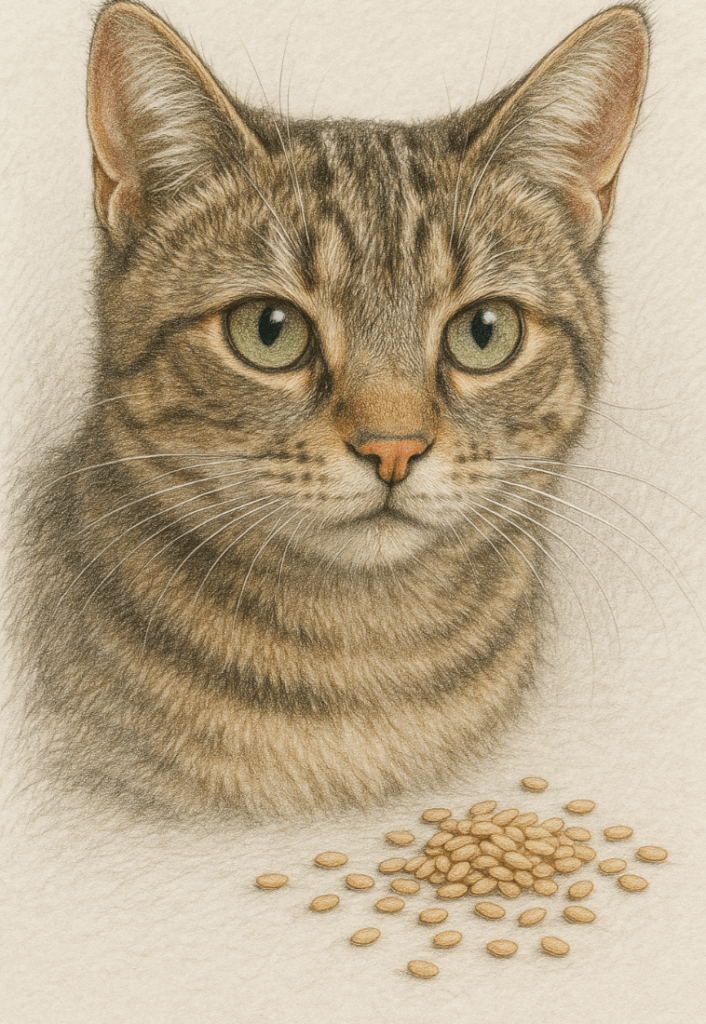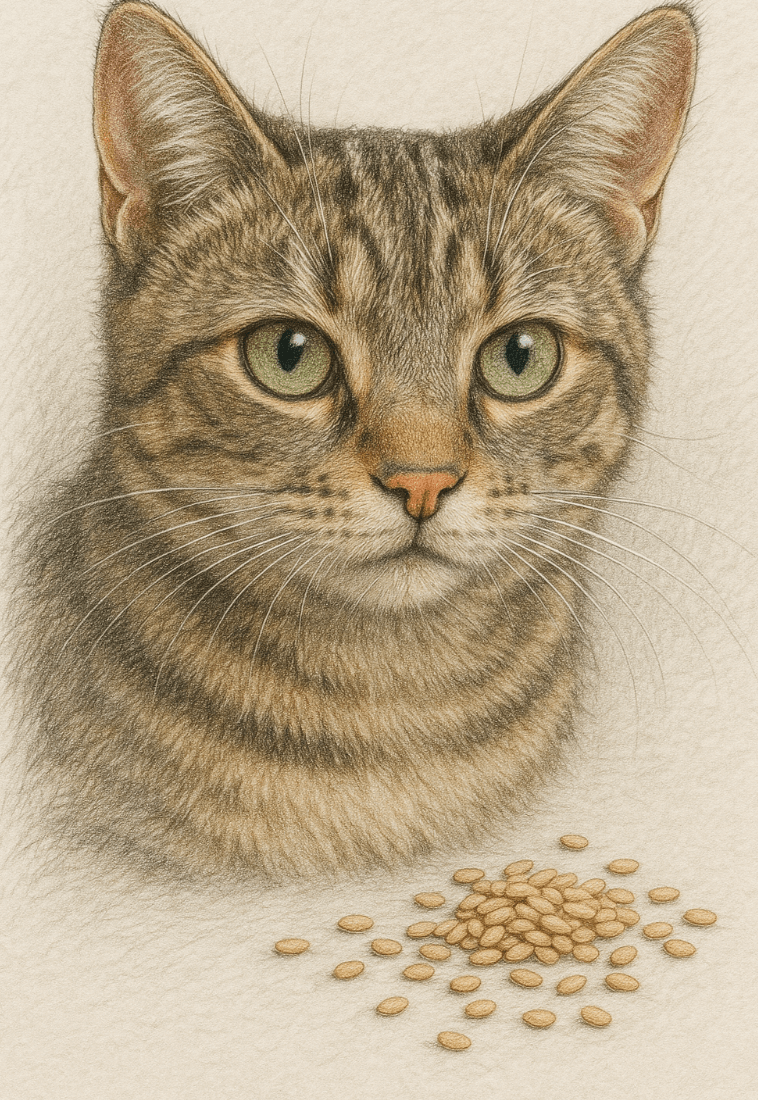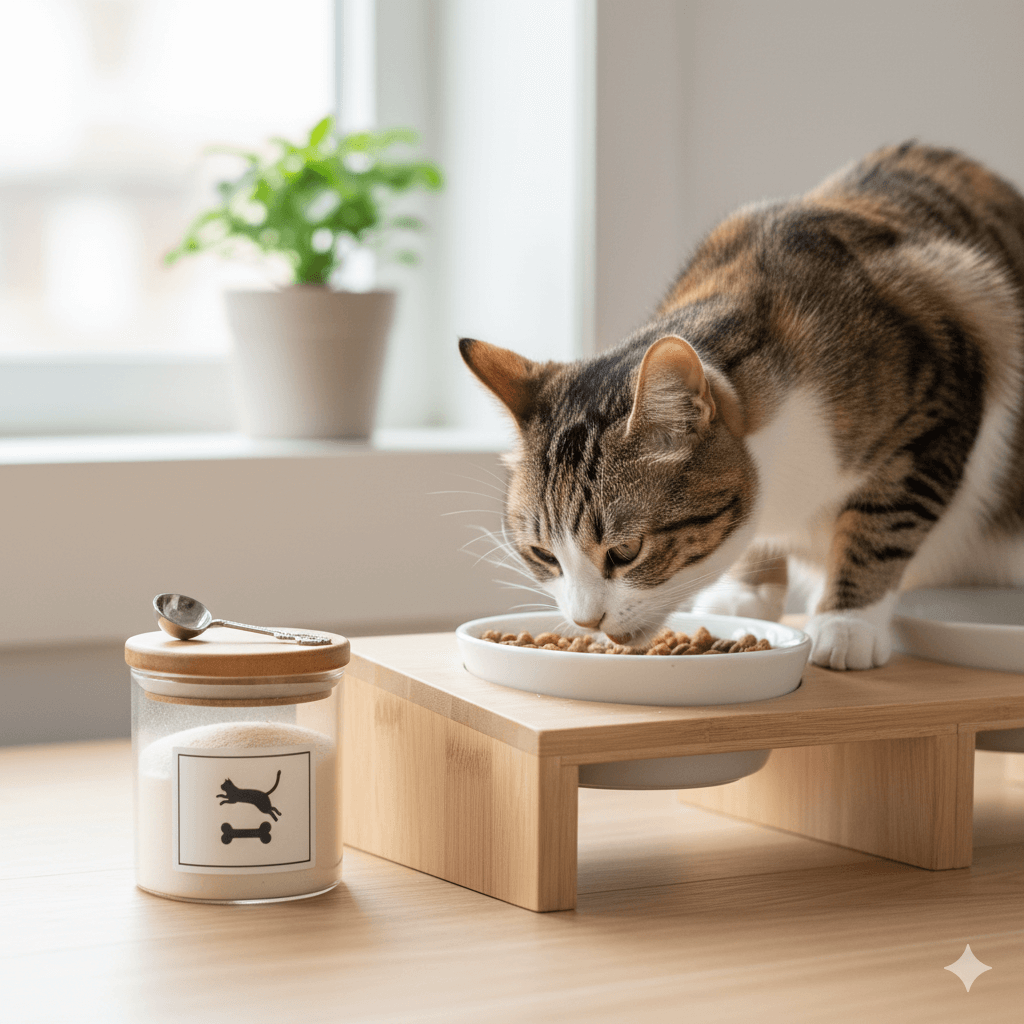Can Cats Eat Sesame Seeds?
When it comes to feeding our feline friends, curiosity often leads us to wonder about the safety of human foods. One such question that arises is whether cats can eat sesame seeds. While these tiny seeds are packed with nutrients and commonly used in human diets, it’s essential to determine if they’re safe or beneficial for cats. Understanding what your cat can and cannot eat is crucial for their health and well-being. In this blog post, we’ll explore the topic of sesame seeds and cats, addressing potential risks, benefits, and alternatives to ensure your furry companion stays happy and healthy.
Are Sesame Seeds Safe for Cats?
Before offering sesame seeds to your cat, it’s important to consider their safety and how they might affect your pet’s digestive system. Here’s a breakdown of what you need to know.
Non-Toxic Nature:
Sesame seeds are not toxic to cats, meaning they won’t cause immediate harm if ingested in small amounts.Difficult to Digest:
Cats lack the enzymes needed to break down plant-based foods, making sesame seeds hard for them to digest properly.Choking Hazard:
Whole sesame seeds can pose a choking risk, especially for smaller cats or those prone to eating quickly.Potential Allergies:
Though rare, some cats may develop allergic reactions to sesame seeds, such as itching or gastrointestinal upset.No Nutritional Benefit for Cats:
While sesame seeds are nutritious for humans, they don’t provide any significant health benefits for obligate carnivores like cats.
While sesame seeds aren’t inherently dangerous, they should be given sparingly, if at all, due to their limited value in a cat’s diet.
Potential Risks of Feeding Sesame Seeds to Cats
Although sesame seeds may seem harmless, there are certain risks associated with feeding them to your cat. Being aware of these dangers can help you make informed decisions.
Upset Stomach:
Consuming sesame seeds can lead to vomiting, diarrhea, or other digestive issues in cats.Weight Gain from Added Calories:
Sesame seeds are calorie-dense, and frequent consumption could contribute to unhealthy weight gain in cats.Blockages in the Digestive Tract:
Undigested seeds may accumulate in the intestines, potentially causing blockages that require veterinary intervention.Salted or Seasoned Varieties:
Flavored or salted sesame seeds can harm cats, as excessive sodium is toxic to their systems.Displacement of Essential Nutrients:
Filling up on non-essential foods like sesame seeds may prevent your cat from eating their nutritionally balanced cat food.
These risks highlight why moderation—or avoidance—is key when considering sesame seeds for your cat.
Check this guide 👉Can Cats Eat Thyme? Best 7 Expert Tips!
Check this guide 👉Can Cats Eat Oregano? Best 7 Expert Tips!
Check this guide 👉Can Cats Eat Parmesan Cheese? Best 7 Expert Tips!

Safe Alternatives to Sesame Seeds | Risks of Unsafe Snacks for Cats |
|---|---|
Cooked plain chicken (no seasoning) | Onions, garlic, and other toxic foods |
Cat-safe fruits like blueberries | Chocolate, caffeine, and sugary treats |
Small amounts of pumpkin puree | Nuts, seeds, and high-fat snacks |
Commercial cat treats | Dairy products like milk or cheese |
Fresh watermelon (seedless) | Grapes, raisins, and artificial sweeteners |
How to Introduce New Foods Safely
If you decide to experiment with new foods for your cat, including sesame seeds, it’s crucial to do so cautiously. Follow these guidelines to minimize risks.
Consult Your Veterinarian First:
Always seek professional advice before introducing unfamiliar foods into your cat’s diet.Offer Tiny Portions Initially:
Start with a very small amount to monitor your cat’s reaction and avoid overwhelming their system.Watch for Adverse Reactions:
Look for signs of discomfort, such as vomiting, diarrhea, lethargy, or allergic reactions, after introducing a new food.Avoid Seasonings or Additives:
Plain, unseasoned versions of any food are safest for cats, as spices and additives can be harmful.Stick to Species-Appropriate Foods:
Prioritize foods specifically designed for cats, as their dietary needs differ significantly from ours.
By following these steps, you can ensure your cat’s safety while exploring new tastes.
Signs Your Cat May Have Eaten Something Harmful
Even with precautions, accidents can happen. Recognizing the signs of toxicity or indigestion helps you act quickly if your cat consumes something harmful.
Vomiting or Diarrhea:
These symptoms often indicate that your cat’s digestive system is struggling to process an unfamiliar food.Loss of Appetite:
Refusal to eat can signal discomfort or illness caused by consuming inappropriate items.Excessive Drooling:
Drooling may occur if your cat has ingested something irritating or toxic.Lethargy or Weakness:
A sudden lack of energy could suggest poisoning or another serious issue.Difficulty Breathing:
Labored breathing may indicate an allergic reaction or ingestion of a highly toxic substance.
Prompt veterinary care is essential if you notice any of these signs after your cat eats something unusual.
Common Mistakes to Avoid When Feeding Cats Human Food
Feeding cats human food requires careful consideration to avoid mistakes that could endanger their health. Here are some pitfalls to watch out for.
Assuming All Safe Foods Are Beneficial:
Just because a food isn’t toxic doesn’t mean it provides nutritional value for cats.Overlooking Portion Sizes:
Even safe foods can cause problems if given in large quantities, leading to obesity or nutrient imbalances.Ignoring Individual Sensitivities:
Every cat is different; what works for one may not work for another, so monitor closely.Feeding Processed or Spiced Foods:
Ingredients like salt, sugar, or artificial flavors can harm cats’ delicate systems.Not Consulting a Vet First:
Skipping professional advice increases the risk of unintentionally harming your pet.
Avoiding these mistakes ensures a safer and healthier experience for your cat.
Nutritious Alternatives to Sesame Seeds for Cats
If you’re looking for ways to enhance your cat’s diet without resorting to sesame seeds, here are some nutritious and safe alternatives.
High-Quality Protein Sources:
Cooked chicken, turkey, or fish (without bones or seasoning) are excellent options for cats.Cat-Safe Vegetables:
Plain steamed carrots or green beans can add variety to their meals in moderation.Limited Fruit Treats:
Small pieces of seedless watermelon, blueberries, or bananas can serve as occasional treats.Commercial Cat Treats:
Specially formulated treats cater to cats’ dietary needs and preferences.Pumpkin Puree:
Unsweetened pumpkin puree aids digestion and can help with hairball control.
These alternatives provide safer and more suitable options for enriching your cat’s diet.
Understanding Your Cat’s Natural Diet Preferences
Cats are obligate carnivores, meaning their bodies are designed to derive nutrients primarily from animal sources. Understanding their natural preferences helps explain why certain foods, like sesame seeds, aren’t ideal.
High Protein Needs:
Cats require diets rich in animal-based proteins to support muscle development and overall health.Limited Ability to Process Plants:
Unlike omnivores, cats lack the enzymes necessary to efficiently digest plant matter.Essential Nutrients Found in Meat:
Taurine, arachidonic acid, and vitamin A are vital nutrients found abundantly in meat but scarce in plants.Instinctual Cravings:
Cats naturally gravitate toward flavors and textures associated with prey animals.Water Content in Food:
Wet food mimics the moisture content of fresh prey, supporting hydration better than dry kibble.
By aligning your cat’s diet with their biological needs, you can promote optimal health and vitality.
Frequently Asked Questions About Cats and Sesame Seeds
Can kittens eat sesame seeds?
No, kittens have sensitive digestive systems and should avoid sesame seeds entirely.
What happens if my cat accidentally eats sesame seeds?
In small amounts, most cats will be fine, but watch for digestive upset and consult your vet if symptoms persist.
Are sesame oil or tahini safe for cats?
Sesame oil and tahini are also difficult for cats to digest and should be avoided.
Can sesame seeds improve my cat’s coat?
No, sesame seeds don’t offer specific benefits for a cat’s skin or coat compared to species-appropriate foods.
How can I satisfy my cat’s curiosity about human food?
Offer cat-safe alternatives like plain cooked meat or specially formulated treats instead of sharing your snacks.
Prioritizing Your Cat’s Health Over Curiosity
While sesame seeds aren’t toxic to cats, they offer little nutritional value and come with potential risks. As obligate carnivores, cats thrive on a diet rich in animal protein and tailored to their unique needs. By focusing on species-appropriate foods and consulting your veterinarian before introducing anything new, you can ensure your cat remains healthy and happy. Remember, your furry friend relies on you to make the best dietary choices for them—so always prioritize their well-being above all else.
Understanding Bone Supplement for Cats: Best 7 Expert Tips! – Safe, vet-approved guidance for strong feline bones & balanced nutrition.
Bone Supplement for Dogs: Best 7 Expert Tips! – Expert guide to calcium, collagen & bone health for every life stage.
Understanding Can Cats Get Sunburn: Best 7 Expert Tips! – Protect your feline from UV damage with vet-backed prevention strategies.
How to Train a Seizure Alert Dog: Best 7 Expert Tips! – Learn expert-backed steps to nurture natural instincts into reliable, life-saving seizure alerts.





